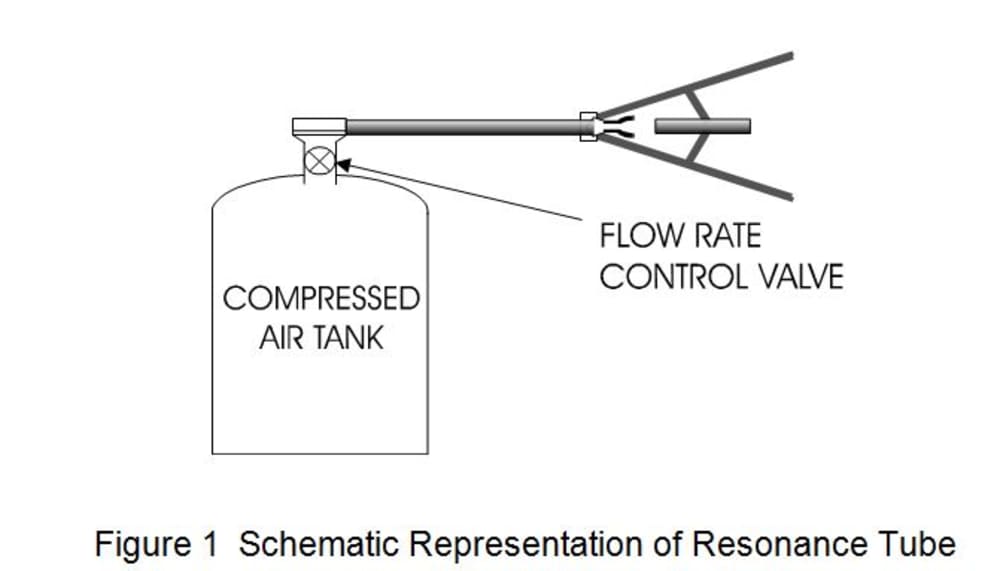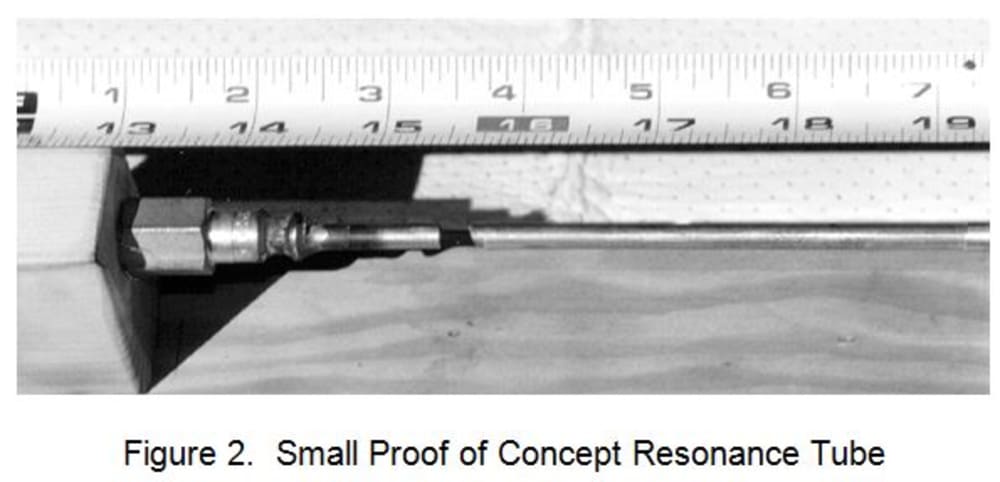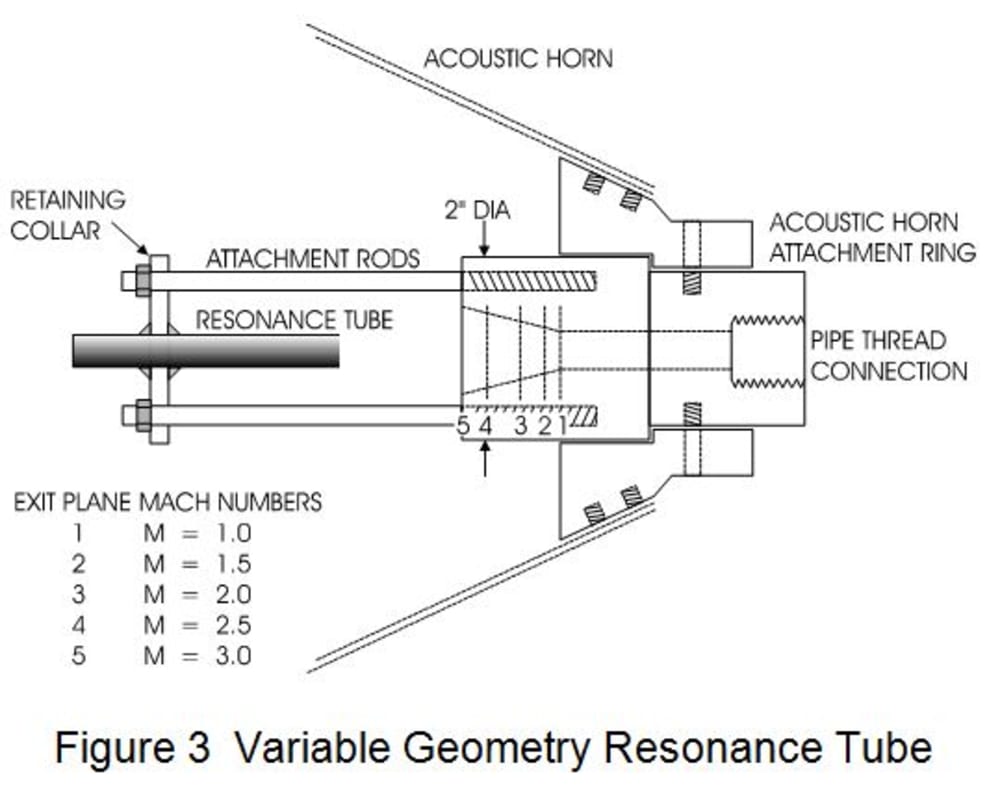The system under consideration is intended to replace pepper sprays and tasers that can cause serious injury with a device the size of miniature flashlight whose effectiveness, simplicity and low cost will attract average consumers. Aimed away from the user at assailants, human or canine, the device directs a 130+ decibel acoustic beam with low to ultrasonic frequencies intolerable to animals and birds. Human reaction is initial startling followed by confusion caused by noise level and fear of attracting unwanted attention. Test data of 132 decibel acoustic output with 3/16" (5 mm) diameter tubes guided preliminary designs of small units with replaceable CO2 cartridges activated by a trigger. With 1.25" diameter, 6" length with flare at the end to direct acoustic beam, the compact system is easily carried in a purse, or pocket. Representation of a resonance tube in Figure 1 illustrates basic components with acoustic fairing, before arrangement into the planned portable weapon.
Apparatus and Tests - Interest in Hartmann-Sprenger oscillators started during my appointment to U.S. - Polish Academies of Sciences Exchange Scholar Program. My new colleagues were discussing Soviet experiments with small resonance tubes capable of disabling or badly disorienting people. Published papers by Hartmann and Sprenger used low speed jets to excite oscillations. Effects in Soviet experiments suggested supersonic jets with shock waves. The fluid dynamic phenomena are presently not well understood. As professor at CSU Fullerton I tested a 1.5" diameter tube driven by Mach 2 flow. Ear protection was inadequate for the noise level since sensors at 25-30 ft. from the bare tubes were at 132 db limits.. Induced vibrations of eyes created optical illusion of oscillations of the 15" thick laboratory concrete floor. Dogs and birds left the campus in panic, and the university president ordered immediate termination of experiments. One 3/16" diameter resonance tube (Figure 2) demonstrated at Army Research Laboratory achieved 136 decibel instrument limit. Schematic representation of a model designed for parametric studies to improve understanding of the phenomena involved and optimize configurations is shown in Figure 3.
Effects on people - Good ear protection notwithstanding high frequency sound levels were intolerable. The impression that everything was bouncing caused confusion. The tones and acoustic power were beyond any loudspeakers and sirens.
Commercial development - Principal interest in developing Hartmann-Sprenger acoustic generators is to persuade consumers, in commercial and safety terms, that the small investment in purchasing them is rapidly recovered in repelling assailants, human and canine, creating alarm to summon help in accidents and medical problems, foiling burglaries when used together with normal alarms, and protection of unattended property. Adoption of the acoustic generators by police would stop accusations of extreme brutality when using pepper sprays and tasers. In airfields where birds invading runways are a hazard to aircraft acoustic generators positioned along the runway with underground compressed air lines would eliminate the need for vehicles to be sent to clear the runway.
Like this entry?
-
About the Entrant
- Name:Andrew Wortman
- Type of entry:individual
- Software used for this entry:MathCAD
- Patent status:none








